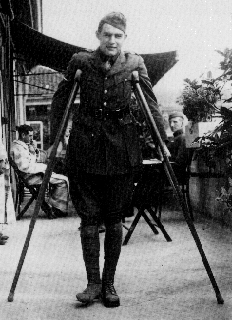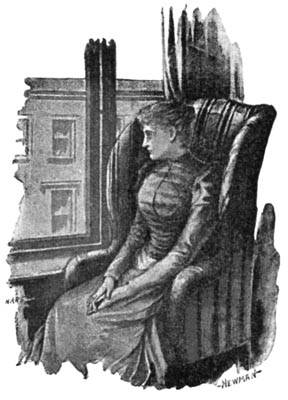
ELA scores and final grades in. While you are working on the assignment below, I will review these with you.
In class: we are reviewing passive and active voice. Class handout/ copy below. The sentences must be rewritten. DUE: Monday, February 3
Assessment on Tuesday, February 4
ACTIVE / PASSIVE VOICE
Active voice
In most English sentences with an action verb, the subject performs the action denoted by the verb.
These examples show that the subject is doing the verb's action.
Because the subject does or "acts upon" the verb in such sentences, the sentences are said to be in the active voice.
Passive voice
One can change the normal word order of many active sentences (those with a direct object) so that the subject is no longer active, but is, instead, being acted upon by the verb - or passive.
Note in these examples how the subject-verb relationship has changed.
Because the subject is being "acted upon" (or is passive), such sentences are said to be in the passive voice.
NOTE: Colorful parrots live in the rainforests cannot be changed to passive voice because the sentence does not have a direct object.
To change a sentence from active to passive voice, do the following:
1. Move the active sentence's direct object into the sentence's subject slot
2. Place the active sentence's subject into a phrase beginning with the preposition by
Because the subject is being
"acted upon" (or is passive), such sentences are said to be in
the passive voice.
3. Add a form of the auxiliary
verb be to the main verb and change the main verb's form
Because passive voice sentences
necessarily add words and change the normal doer-action-receiver of
action direction, they may make the reader work harder to understand
the intended meaning.
The active voice flows more smoothly and is easier to understand than
the same sentence in passive voice.
It is generally preferable to use
the ACTIVE voice.
Active - Passive Voice
Name ______________________
Note: there is a quiz on this material on Tuesday,
February 3
Rewrite each of the following
sentences, changing each passive voice sentence into the active voice.
1. A
piece of plastic had been swallowed by the child.
2.
Two separate people were given rides in the new models by the designer.
3. Our dog is frightened by loud
thunderstorms.
4.
The store was kept open until 11:00 p.m. by the overtired workers.
5. The ball is hit straight into
the bleachers by the batter.
6. New insecticides are produced each year by
chemical companies.
7. The old shed was painted bright blue by the
man's son.
8.
Resources for the project were not included in the budget by the
legislature.
9. The vibrant colors in the painting are immediately noticed by museum
goers.
10.
The story is presented in a dispassionate way by the author.
11. The winning novel was chosen by a
panel of famous fiction writers.
12.
Four motorists were killed by automobile accidents over the Memorial Day
weekend.
13. The book on glaciers was never sent to the bookstore by the publishers.
14.
A ball traveling at incredible speed was thrown by the veteran pitcher.
15.
The dishes were cleared from the table by the impatient server.
16.
English sheepdogs are bred and raised by the kennel on 3rd Avenue.
17.
We were amazed by some of the performances.
18. Adequate medical benefits
should be insisted on by every employee.
19. A motion was made to table the matter
by three committee members.
20. A note was written on the
brown paper bag by the grocery clerk.
3. Add a form of the auxiliary verb be to the main verb and change the main verb's form
Because passive voice sentences necessarily add words and change the normal doer-action-receiver of action direction, they may make the reader work harder to understand the intended meaning.
As the examples below illustrate, a sentence in active voice flows more smoothly and is easier to understand than the same sentence in passive voice.
It is generally preferable to use the ACTIVE voice.
To change a passive voice sentence into an active voice sentence, simply reverse the steps shown above.
1. Move the passive sentence's subject into the active sentence's direct object slot
2. Remove the auxiliary verb be from the main verb and change main verb's form if needed
3. Place the passive sentence's object of the preposition by into the subject slot.
Because it is more direct, most writers prefer to use the active voice whenever possible.
The passive voice may be a better choice, however, when
• the doer of the action is unknown, unwanted, or unneeded in the sentence
Examples
• the writer wishes to emphasize the action of the sentence rather than the doer of the action
Examples
• the writer wishes to use passive voice for sentence variety.
Active - Passive Voice Name ______________________
Note: there is a quiz on this material on Tuesday, February 3
Rewrite each of the following sentences, changing each passive voice sentence into the active voice.
1. A piece of plastic had been swallowed by the child.
2. Two separate people were given rides in the new models by the designer.
3. Our dog is frightened by loud thunderstorms.
4. The store was kept open until 11:00 p.m. by the overtired workers.
5. The ball is hit straight into the bleachers by the batter.
6. New insecticides are produced each year by chemical companies.
7. The old shed was painted bright blue by the man's son.
8. Resources for the project were not included in the budget by the legislature.
9. The vibrant colors in the painting are immediately noticed by museum goers.
10. The story is presented in a dispassionate way by the author.
11. The winning novel was chosen by a panel of famous fiction writers.
12. Four motorists were killed by automobile accidents over the Memorial Day weekend.
13. The book on glaciers was never sent to the bookstore by the publishers.
14. A ball traveling at incredible speed was thrown by the veteran pitcher.
15. The dishes were cleared from the table by the impatient server.
16. English sheepdogs are bred and raised by the kennel on 3rd Avenue.
17. We were amazed by some of the performances.
18. Adequate medical benefits should be insisted on by every employee.
19. A motion was made to table the matter by three committee members.
20. A note was written on the brown paper bag by the grocery clerk.







 I
I

 I
I